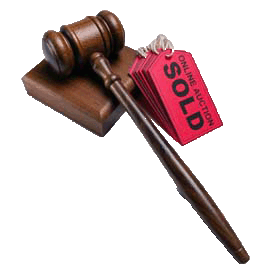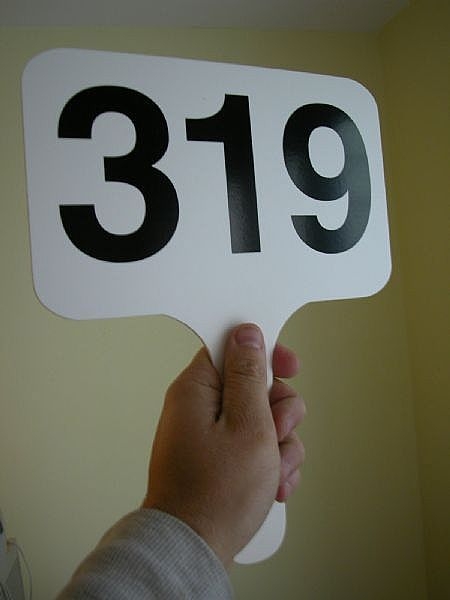
Companies are doing things on the Web that they never thought possible, including auctions, creating virtual communities, and operating portals. Online auctions have provided many companies with larger profits, due to the relatively easy setup and use of the site for the customer. Also, they can make a profit by charging users to both buy or sell on the site, as well as charging for other features. However, all of this would not be if it wasn't for those auctions that existed before computers even came to be, which include the following types:
- English,
- Dutch,
- First-Price Sealed-Bid,
- Second-Price Sealed-Bid,
- Open-Outcry Double,
- Sealed-Bid Double, and
- Reverse.
Below you will find a chart listing some of the key characteristics of each auction type, and on the right more information about each type of auction.
The earliest written records of auctions are from Babylon and date from 500 BC. In those auctions, men bid against each other for the women they wished to marry. Other records show the use of auctions to liquidate property that Roman soldiers took from their vanquished foes. Auctions became more commonplace in the 17th-Centure when taverns held auctions of art and furniture.
In an auction, a seller offers an item or items for sale, but does not establish a price. This is called "putting an item up for bid." Potential buyers are given information about the item or items and then they offer bids, or the prices they are willing to pay for the item. The potential buyers are known as bidders, and have developed private valuations, or amounts that they are willing to pay for the item. The auction is managed by an auctioneer. In some auctions, people employed by the seller or the auctioneer can make bids on behalf of the seller; these people are known as shill bidders, which can artificially inflate the price of an item and may be prohibited from bidding by the rules of a particular auction.

| Auction Type | Key Characteristics |
|---|---|
| English | Starts at lowest price, bidding goes up until no more bids placed. |
| Dutch | Starts from high price and drops until price is accepted. |
| First-price sealed-bid | Highest bidder pays price of highest bid placed; bidders don't know each other's bids. |
| Second-price sealed-bid (Vickery auction) |
Higest bidder pays price of second-highest bid; bidders don't know each bidder's bid. |
| Open-outcry double | Bidders shout bids, and auctioneer matches seller offers (low to high) with buyer offers (high to low). Bids can be modified accordingly. |
| Sealed-bid double | Similar to open-outcry, except bidders can't modify bids. |
| Reverse/seller-bid | Used often in businesses which screen the sellers before participating. Prices go down as bidding continues until seller is at lowest price they want. |
During an English auction, the bidders will make their bids, each being higher than the last, until no one wants to go further. Then, that particular auction is over for that item and the auctioneer announces the next item. English auctions are the most common, and are known also as ascending-price auctions, open auctions, or open-outcry auctions. However, not all auctions that are open auctions are English auctions.
Another form of English auctions is the Yankee auction, in which bidders specify the number of items they are wanting to buy. When the auction ends, the higest bidder receives their item(s), and the rest of that item that is left over is distributed to the next higest bidders until the item is gone.

Some English auctions may have a minimum bid or reserve price. This is an amount that the auction will begin at or the lowest price that will be accepted for that item. If these amounts are not met or exceeded, the item is not auctioned off.
For the seller, one of the drawbacks of English auctions is that bidders will tend to not bid their full private valuation, or the amount they are willing to pay for the item, if they can place a bid that is slightly more than the current highest bidder. However, bidders risk getting too caught up in the auction and overbid their private valuations, in which they suffer the 'winner's curse.'
Dutch auctions are those in which the auctioneer starts the bidding at a high price and decreases it until a bidder accepts the price. This is also known as a descending-price auction. In most Dutch auctions, the seller offers a number of similar items for sale. Dutch auctions are particularly good for moving large quantities of items quickly. There have been very few online Dutch auction site since they do not increase sales enough to justify the cost of operation.
First & Second-Price Sealed Bid Auctions
These types of auctions are very similar, but at the same time, have one huge difference between them. Both are sealed-bid auctions, or auctions in which the bidders turn in their bids without the others knowing what their bid was. However, in a first-price sealed-bid auction, the highest bidder has to pay the price that they submitted to the auctioneer, whereas in a second-price sealed-bid auction, the highest bidder pays the price that the second-highest bidder submitted for their bid.
The second-price sealed-bid auction is also known as a Vickrey auction due to the fact that William Vickery won the 1996 Nobel Prize in Economics for studies of the propeties of this auction type. His conclusion includes the following:
- It yields a higher retun for the seller,
- Encourages all bidders to bid the amounts of their private valuations, and
- It reduces the tendency for bidders to act together to perform an illegal or unethical bid , and since the winning bidder is protected from an extremely high bid, the bidders tend to bid higher than they would in a first-price sealed-bid auction.
Open-Outcry & Sealed Bid Double Auctions
Open-outcry double auctions are often used to trade stocks and other commodity items. Each item or stock being traded has its own trading pit, which can get hectic when you have as many as 20-30 people in one pit.
A sealed-bid double auction is similar to the open-outcry double auction in that the offers to buy and sell are often combined, but it is different in that the price-amount offers made by the bidders are not called out, but rather submitted to the auctioneer.

Reverse auctions, also known as seller-bid auctions, are used much more frequently for businesses than customers, since they allow for the business to decide what supplier to work with buy seeing how low they can get the supplier to sell the product while still being willing to work with them. In a reverse auction, the prices go down until the seller (in most cases, the supplier) will not go lower.